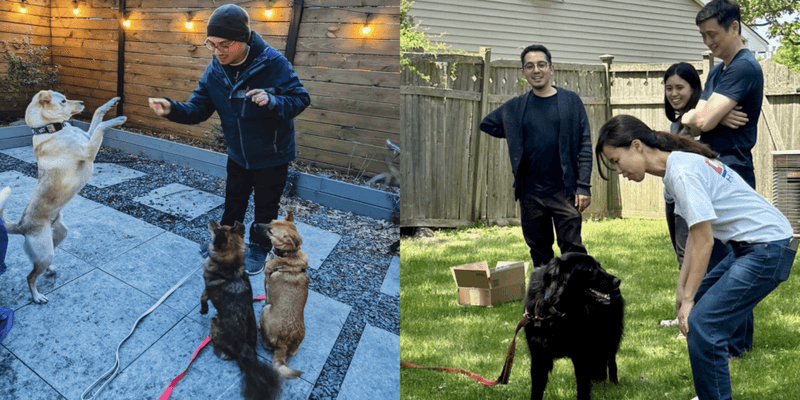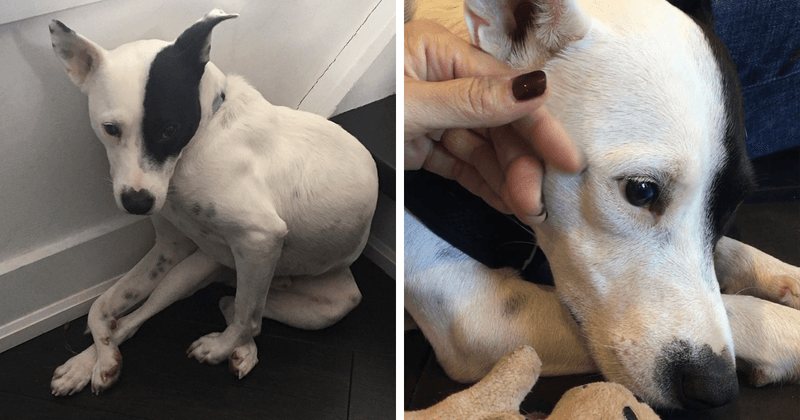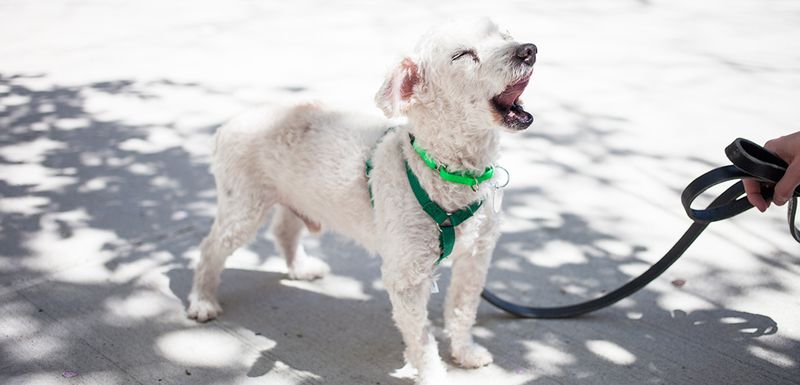While many dogs find loving homes, some face several challenges that prevent them from being adopted. These challenges can range from behavioral issues to misconceptions about certain breeds. Understanding these obstacles can help potential adopters make informed decisions and offer a forever home to a deserving dog. Here are 17 reasons why some dogs never find a forever home, each highlighting a unique challenge.
Senior Age
Age is just a number, but for senior dogs, it’s often viewed as a hurdle. Older dogs might have less energy, which can deter families looking for playful companions. However, their mellow nature can be perfect for those seeking a calm addition to their home. Many fear the potential medical issues that come with age, worrying about costs and care. Yet, the wisdom and love a senior dog offers are unmatched. Additionally, their loyalty and appreciation for a second chance at life are heartwarming. Embracing a senior dog can be a rewarding experience, filled with gratitude and gentle companionship.
Behavioral Issues
Dogs, like people, have unique personalities, and sometimes, these come with quirks. Behavioral issues, such as anxiety or aggression, can arise from past trauma or a lack of training. Potential adopters might feel unequipped to handle such challenges, fearing they may not provide the right environment. Training and patience can transform these dogs’ lives, revealing a loyal and loving companion beneath the surface. Behavioral quirks can actually make for an interesting pet dynamic, offering a personal growth journey for both the dog and its owner. With the right support, these dogs can thrive in a forever home.
Breed Misconceptions
Breed stereotypes often influence adoption decisions, especially for breeds like pit bulls or rottweilers. Misunderstandings about their behavior or temperament lead to unjust biases, overshadowing their true nature. These breeds can be affectionate and family-friendly, dispelling the myths surrounding them. Many fail to see beyond the stereotype, missing out on their loyal and protective qualities. Education and advocacy play crucial roles in changing perceptions, highlighting their potential as loving companions. Understanding that behavior is individual, not breed-specific, can open doors to adopting these misunderstood dogs, offering them a chance at a fulfilling life.
Medical Needs
Some dogs have medical conditions that require extra care, making adopters hesitant due to perceived burdens. Conditions like diabetes or arthritis can seem daunting, yet they don’t define the dog’s ability to love and be loved. Understanding these needs can foster a nurturing bond, as managing their health becomes part of daily life. The joy and companionship these dogs offer often outweigh the challenges. Advocating for these dogs involves showing that with the right care, they can live fulfilling and joyful lives, proving that their medical needs are just a small part of their story.
Size Concerns
Bigger isn’t always better when it comes to perceptions of dog size. Large breeds, such as St. Bernards or Great Danes, might intimidate potential adopters with their imposing stature. However, their gentle and often lazy demeanor can surprise many. Apartment living can work with large dogs, given the right exercise and mental stimulation. Often, it’s the small dogs that have higher energy levels. These gentle giants are often misunderstood, their size overshadowing their sweet and loving nature. Embracing a big dog can bring unexpected happiness and a sense of security, proving that size is just a number.
Lack of Training
Training a dog requires time and effort, and some dogs in shelters have had little to no training. This can be off-putting for potential adopters who want a dog ready to fit seamlessly into their lives. However, training can be a bonding experience, offering growth for both the dog and the owner. Positive reinforcement and consistency can turn an unruly dog into a well-mannered companion. It’s a journey of patience, where every small win feels monumental. Dogs eager to learn are rewarding, as their transformation reflects the love and commitment invested in them, making them cherished family members.
High Energy Levels
Some dogs are bundles of energy, requiring more exercise and engagement than the average family can manage. Breeds like Border Collies or Huskies thrive on activity, needing both physical and mental challenges to stay happy. This high energy can be daunting, yet for active individuals or families, these dogs offer the perfect match. They encourage outdoor activities and can become the best workout partners. Channeling their energy constructively means fewer behavioral problems and a happier pet. These dogs can bring excitement and vitality to any home, turning simple walks into joyful adventures.
Previous Trauma
Trauma leaves a mark not just on humans, but on dogs too. Those with past abusive experiences often carry scars that affect their behavior and trust in humans. Potential adopters might shy away from these dogs, fearing they won’t be able to handle their needs. Yet, with patience and a nurturing environment, these dogs can gradually heal and learn to trust again. Their journey to recovery can be deeply rewarding, showcasing resilience and the power of love. These dogs often become deeply bonded with their adopters, forming connections that are profoundly moving and heartwarming.
Color Bias
Believe it or not, color bias exists in the pet adoption world. Black dogs often face longer shelter stays, a phenomenon known as “Black Dog Syndrome.” Myths and cultural superstitions play a part, leading to unfair disadvantages. However, these dogs are just as loving and loyal as their more colorful counterparts. Their glossy coats can shine beautifully in the sun, each dog with a distinct personality waiting to be discovered. Breaking down these biases involves education and storytelling, emphasizing that color does not equate to character. Embracing a black dog offers joy and delightful surprises.
Special Dietary Needs
Some dogs require specific diets due to allergies or health conditions, which can seem overwhelming for potential adopters. Navigating these dietary needs can appear complex, yet modern conveniences make it easier than ever to cater to them. Specialized foods and supplements are readily available, ensuring these dogs receive balanced nutrition. Once integrated into a routine, these needs become second nature, part of the everyday care that strengthens the bond between dog and owner. Supporting these dogs demonstrates compassion and understanding, rewarding adopters with the satisfaction of seeing their new friend thrive.
Overlooked Seniors
Senior dogs are often passed over in favor of puppies or younger dogs, yet they offer unique companionship. Many assume older dogs come with baggage or health issues, but they bring wisdom and calm, enriching a home with love. Their life experience means they settle in quickly, often knowing basic commands. These dogs are perfect for families wanting a more relaxed pet or those new to dog ownership. Choosing a senior dog is an act of kindness, offering them comfort in their twilight years. Their gratitude and love are sincere, making them irreplaceable family members.
Multiple Pets
Adopting multiple pets can seem overwhelming, yet it’s a choice that brings double the joy and companionship. Dogs, being pack animals, thrive in company, minimizing separation anxiety and providing constant companionship. Some adopters hesitate, fearing increased responsibility and cost. However, the benefits often outweigh the challenges, as dogs entertain and exercise each other, reducing the burden on their owners. The dynamics between multiple pets add a layer of fun and amusement to daily life. It’s a decision that needs careful consideration, but one that can result in a lively and joyful household.
Special Needs
Dogs with special needs require a bit more care, which can initially deter potential adopters. Whether it’s mobility issues or sensory impairments, these dogs often lead fulfilling lives with the right support. Adjustments might include ramps for easier access or gadgets for hearing impairments. The bond that forms through overcoming challenges together is profound and lasting. These dogs teach resilience and adaptability, often thriving in caring environments. Adopting a special needs dog is a noble commitment, offering a second chance to those who deserve it most. The rewards come in love and appreciation that these dogs offer abundantly.
Shyness or Fearfulness
Shy or fearful dogs often hide in the background, overshadowed by their more outgoing peers. Their reserved nature may seem challenging, but with patience and understanding, these dogs blossom into devoted companions. Their cautious approach to life stems from past experiences or innate personality, requiring gradual confidence-building. They appreciate gentle encouragement and create a deep bond with those who invest time and love. These dogs teach patience and empathy, rewarding adopters with unconditional loyalty. Embracing a shy dog adds depth and tenderness to a home, offering quiet moments of joy and connection.
Unfamiliar Breeds
Unfamiliar breeds often remain in shelters longer due to a lack of recognition or understanding. Potential adopters may hesitate, unsure about the breed’s characteristics or care needs. Yet, these dogs can offer delightful surprises, with personalities as unique as their appearance. Discovering the quirks and traits of an unfamiliar breed can be an exciting journey. It involves research and willingness to embrace the unknown, leading to rewarding companionship. These dogs offer a chance to learn and grow, often becoming beloved family members with their distinct charm and individuality.
Owner Lifestyle Mismatch
Sometimes, the mismatch between a dog’s needs and an owner’s lifestyle hinders successful adoption. Active dogs might not fit well with sedentary owners, creating frustration for both parties. Assessing one’s lifestyle honestly ensures the adoption is mutually beneficial. For city dwellers, a low-energy dog might thrive, while countryside homes suit active, adventurous breeds. Finding the right match involves understanding both the dog’s and the owner’s needs. This thoughtful approach leads to harmonious living, where the dog complements and enhances its owner’s life, creating a joyful and fulfilling partnership.
Unpredictable Barking Patterns
In the bustling heart of urban neighborhoods, some dogs develop unpredictable barking patterns. These vocalizations, often misunderstood, can deter potential adopters. Imagine a dog that barks at odd hours due to city sounds.
This behavior, while natural, can be challenging in apartment complexes where neighbors value quiet. Dogs accustomed to the vibrant cityscape might react to every sound, from honking cars to bustling crowds.
Understanding and training can mitigate these patterns, but initial impressions often overshadow the potential for a calm companion. Adopters willing to invest time and patience can discover a loyal friend behind the barks.

















